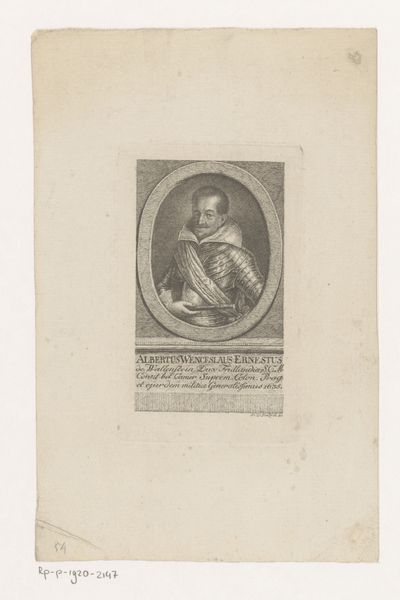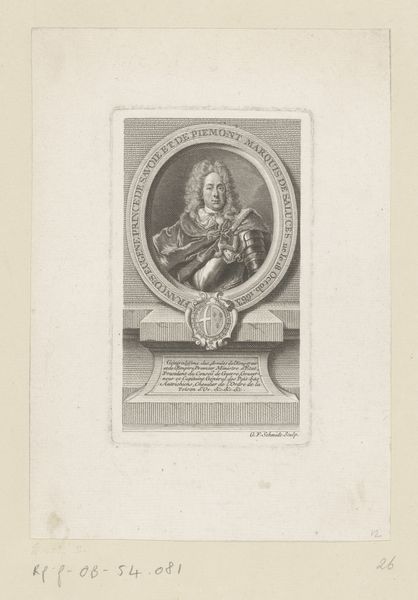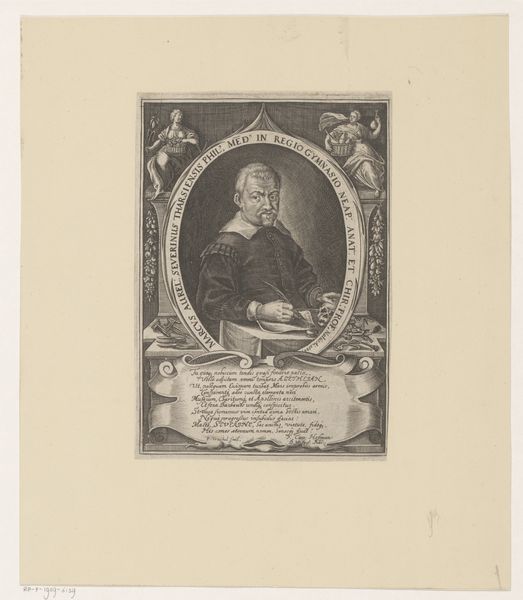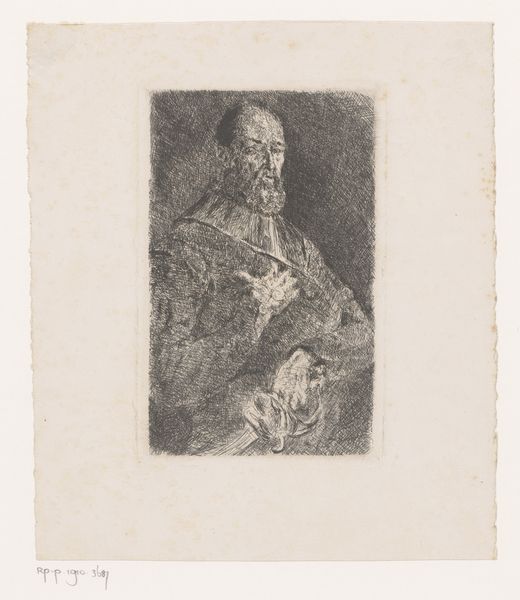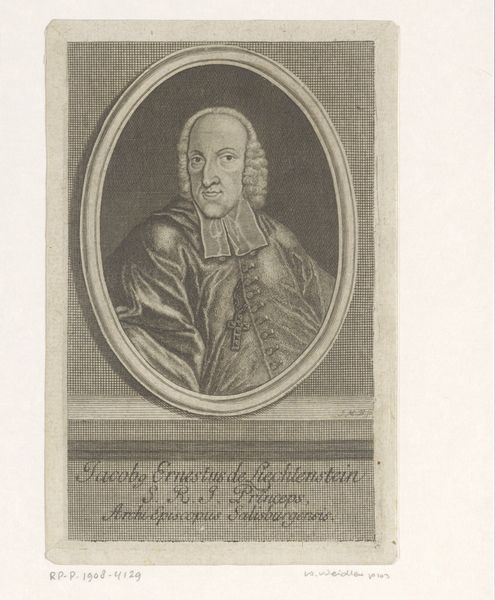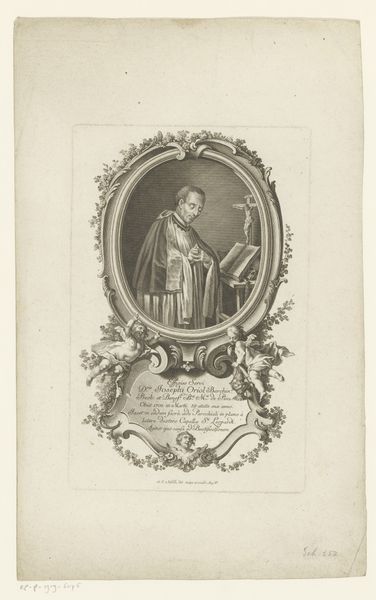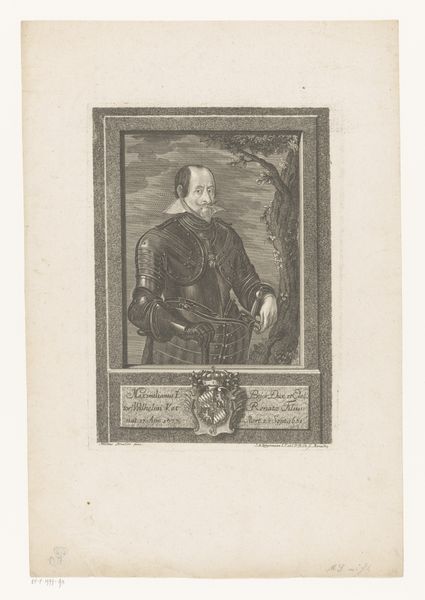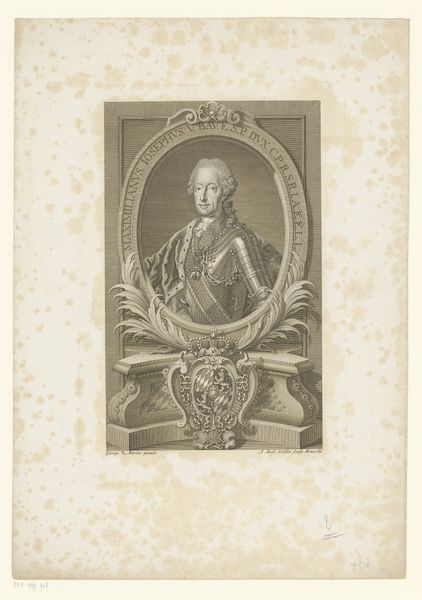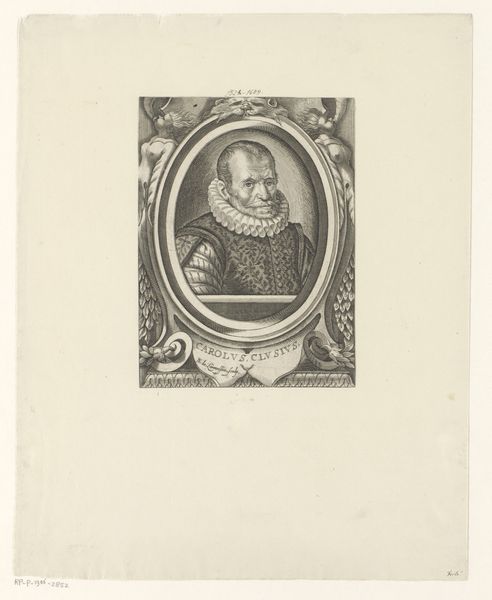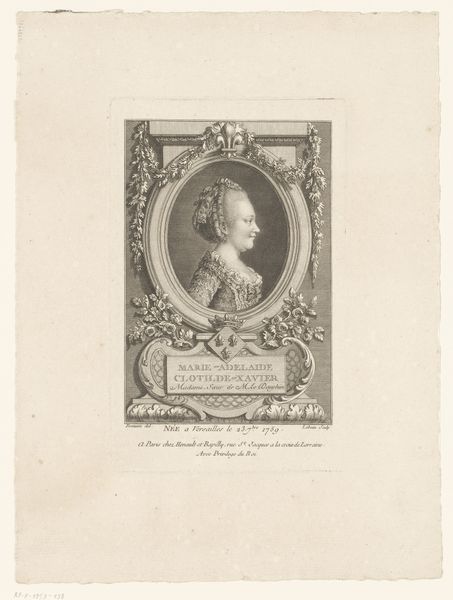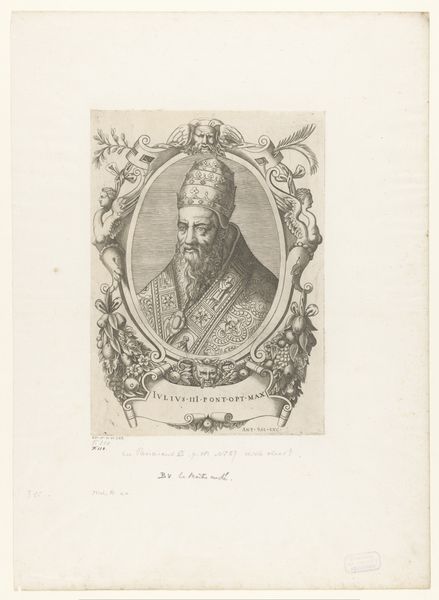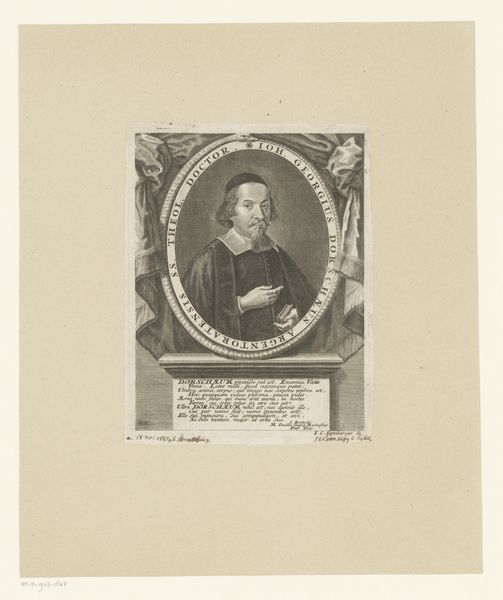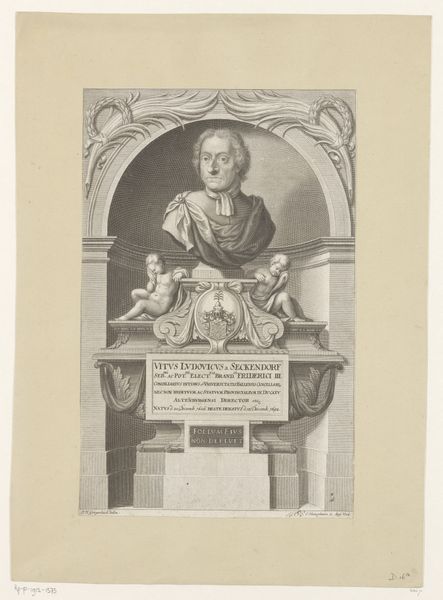
print, engraving
#
portrait
# print
#
history-painting
#
engraving
#
monochrome
Dimensions: height 133 mm, width 84 mm
Copyright: Rijks Museum: Open Domain
Curator: Here we have a print from sometime between 1732 and 1780, a "Portretbuste van François de Scepeaux" rendered by Pierre Etienne Moitte, using the engraving technique. Editor: It’s striking. The monochrome treatment and formal presentation give it an almost austere, timeless quality. The subject seems serious and noble. Curator: It’s interesting to consider engraving in this period, how the artist's labor translated to reproducible images that were more accessible. The fine lines meticulously carved to create tone and detail demonstrate amazing craft, blurring the line between "fine art" and reproducible craft objects. Editor: The figure, presented as a bust, is set within an elaborate architectural frame flanked by symbols—are those lions? And above the frame, is that floral decor? I read them as symbols of power and refinement, speaking volumes about how Scepeaux wished to be seen and remembered. The continuity of such symbols fascinates me; the lion's cultural weight has evolved through ages of heraldry and power struggles. Curator: Yes, indeed. And the engraving process itself lent a particular aura to the images produced. Consider the materiality of the copperplate, the physical effort involved in incising the design, and the subsequent transfer of ink onto paper—a tangible connection to its creation, offering some insight into the process and intention of the artist. Editor: That connection you speak of reminds me, also, of the act of preservation itself. How a printed image can sustain a memory. A single print existing hundreds of years on is powerful in the stories it suggests across generations. The very act of framing the bust solidifies the subject's place in collective memory. Curator: Precisely, by examining the process, labor, and circulation of these prints, we gain insights into not only art history but also social and economic factors of the era, highlighting the convergence of creative and industrial processes. Editor: Yes, together, this image reveals the subject's historical and psychological weight while simultaneously illuminating its societal moment through accessible symbols. It allows us to think about the visual tools we employ today. Curator: Ultimately, examining prints such as these, enables a multi-faceted exploration of past, highlighting how these artifacts participated in shaping historical perceptions through both craft and image. Editor: And revealing a dialogue between visual language and tangible object—resonating with history across time.
Comments
No comments
Be the first to comment and join the conversation on the ultimate creative platform.
